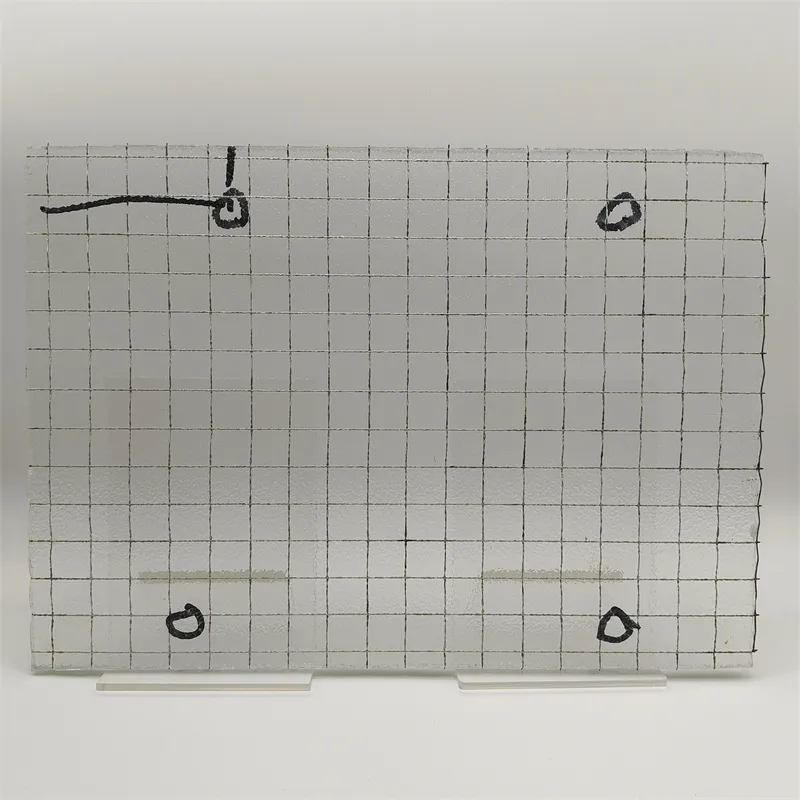Dec . 20, 2024 11:23 Back to list
types of float glass
Types of Float Glass An Overview
Float glass, celebrated for its clarity and uniformity, is one of the most widely used types of glass in the construction and manufacturing industries. This type of glass is created through a unique process that involves floating molten glass on top of molten tin, resulting in a flat and smooth surface. This article explores the various types of float glass, their production methods, characteristics, applications, and the advantages they offer.
Production of Float Glass
The production of float glass is a fascinating process. It begins with the melting of raw materials, which typically include silica sand, soda ash, and limestone. This mixture is heated in a furnace until it reaches temperatures of around 1,700 degrees Celsius. Once molten, the glass is poured onto a bath of molten tin. The density of the tin causes the glass to float on top, forming a smooth and flat surface as it cools. Because of this method, the resulting glass is not only flat but also free from bubbles and imperfections, making it ideal for a variety of applications.
Types of Float Glass
Float glass can be categorized into several types based on different criteria, including thickness, treatment, and functional properties. Here are some of the most common types of float glass
1. Clear Float Glass This is the most basic form of float glass, known for its high transparency and light transmission properties. Clear float glass is often used in windows, doors, and facades due to its aesthetic appeal and unobstructed view.
2. Low-Iron Float Glass This type of float glass has a lower iron content, resulting in minimal green tint. It offers superior clarity and is often used in applications requiring high light transmittance, such as solar panels and display cases.
3. Tinted Float Glass Tinted float glass is produced by adding metal oxides during the melting process. This results in glass that can reduce glare and heat, making it ideal for use in buildings in sunny climates. Common colors include bronze, gray, and green, which provide not only aesthetic options but also energy efficiency.
4. Reflective Float Glass Reflective glass is coated with a thin layer of metal, giving it a mirrored appearance. It reflects sunlight and reduces heat gain, making it a popular choice for commercial buildings. This type also enhances privacy while maintaining visibility from the inside.
types of float glass

5. Laminated Float Glass This type includes two or more layers of float glass bonded together with an interlayer, often made of PVB (polyvinyl butyral). Laminated glass offers enhanced safety and UV protection, making it ideal for skylights, glass floors, and safety glass applications.
6. Tempered Float Glass Tempered glass is produced by heating float glass to high temperatures and then rapidly cooling it. This process increases the glass’s strength and makes it more resistant to thermal stress. Tempered float glass is commonly used in shower doors, glass railings, and facades.
7. Insulated Float Glass Insulated units consist of two or more panes of float glass separated by a spacer and sealed to create an insulated air space. This type is essential for energy-efficient window systems, significantly reducing heat transfer and improving thermal performance.
Applications
Float glass has a wide array of applications. Due to its high optical clarity, it is extensively used in residential and commercial windows. In addition, tinted and reflective glass is favored for skyscrapers, as it helps in controlling temperature and glare. Laminated and tempered glasses are strong choices for safety applications, including vehicular glass and indoor installations like glass walls and partitions.
Advantages of Float Glass
The advantages of float glass are numerous. Its smooth and flat surface ensures high optical quality, while its versatility allows for customization in terms of thickness, color, and treatments. Furthermore, advancements in technology have led to the availability of energy-efficient options, contributing to sustainable building practices.
Conclusion
Float glass is a versatile material that plays a crucial role in modern architecture and design. Understanding the different types of float glass, their properties, and applications is essential for architects, builders, and homeowners alike. As technology continues to evolve, the possibilities for float glass expand, promising even greater innovations in the future. Whether it is providing clear views in residential windows or enhancing the aesthetic appeal and energy efficiency of commercial buildings, float glass remains an indispensable component of contemporary construction.
-
Safety and Style with Premium Laminated Glass Solutions
NewsJun.24,2025
-
Reinvents Security with Premium Wired Glass
NewsJun.24,2025
-
Premium Float Glass Line for Modern Architecture
NewsJun.24,2025
-
Low Emissivity Glass for Energy-Efficient Architecture
NewsJun.24,2025
-
High-Performance Insulated Glass Solutions for Modern Architecture
NewsJun.24,2025
-
Elevates Interior Style with Premium Silver Mirror
NewsJun.24,2025
Related PRODUCTS














